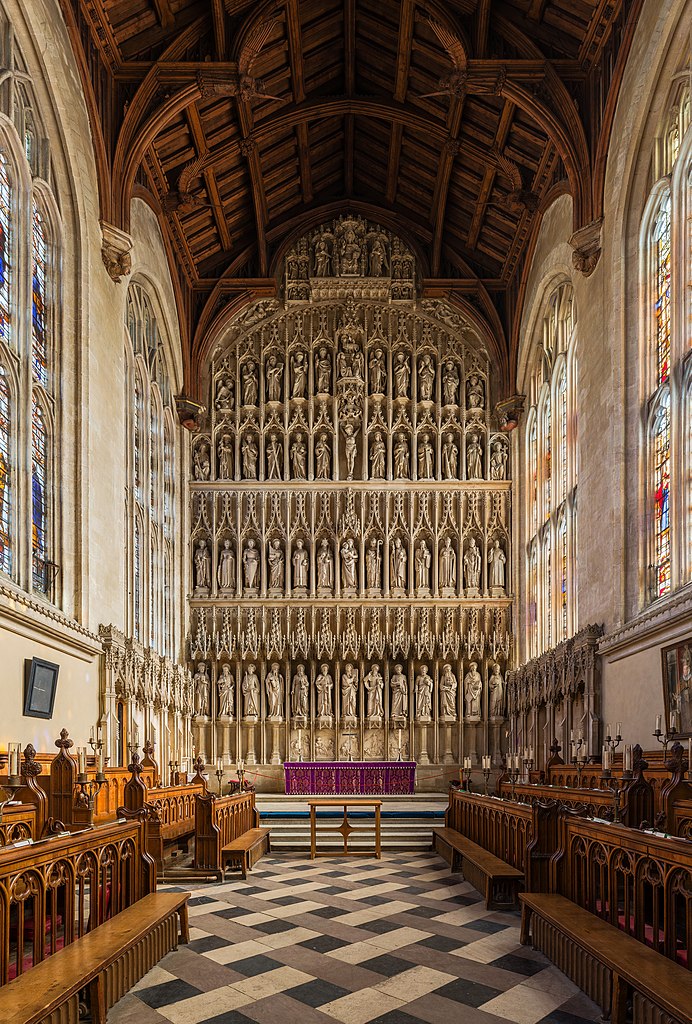A reredos is any large decoration – an ornamented wall, screen, or other structure – behind the altar in a Christian church. The term was in common use by the 15th century,[1] and is derived from the Anglo-Norman word areredos, itself from the Old French arere meaning “behind”, and dos meaning “back”.[2] It may be free-standing or form part of the retable, as a structure on either side of the altar.[3][a]Retables are either placed directly on the altar or on a surface behind it, whereas a reredos typically rises from the floor.[4] The reredos and the retable constitute the two main types of alterpieces.[4]
Early reredoses were paintings on the wall, but by the time of the Middle Ages they could consist of rich silken hangings or pieces of jewelled metalwork, as in St Mark’s in Venice. More usually though, they were painted wooden panels, either fixed or in the form of a tryptich, or composed of carved stone.[5]

